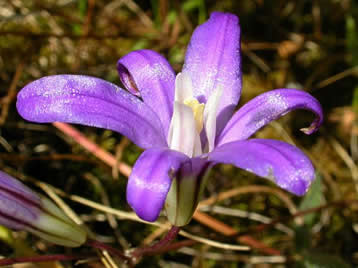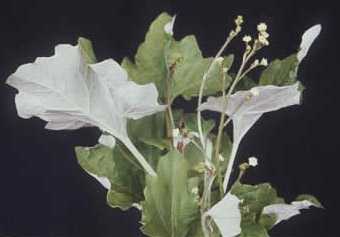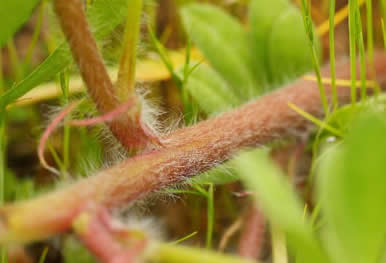E-FLORA BC PHOTOGRAPHY TIPS

Harvest Brodiaea (Brodiaea coronaria), photo by Dave Ingram
E-Flora BC welcomes photo submissions for vascular and non-vascular plants and fungi and lichens. When you submit a photo to E-Flora, we will review the identification and either put a name to the plant, or confirm the name you have attached. If a species can't be identified from the photo to species level, then we usually delete the photo from our database.
Sometimes confirming identification or making an identification from photos is challenging for us, though. Because plant identification is based on the presence of "key" characters (characters that separate one plant from another in a plant key), sometimes identification from a photo is difficult if these key characters cannot be seen in the photo.
Because of this challenge, we have compiled the following set of tips and guidelines for taking plant photos for E-Flora. It isn't necessary to follow these guidelines for photos you submit, but it would always be helpful for our photo reviewers.
Where to begin?
A good way to begin is to learn a little bit about species identification so that can guide your photography. Use one of the many field guides or technical manuals that are available to learn about the key features or characteristics of a genus or species, so that important features can be included in a shot. For example, an important feature for many vascular plants is the arrangement of leaves on the stem. Many plants have alternate leaves, but a few have opposite leaves. If we can see that the leaves are opposite, then this can help us quickly resolve the identifcation. Other features that are helpful to us are listed below.
Fungi are a whole other challenge. Because our fungi photo gallery may be used by those interested in edible mushrooms, and some mushrooms are very poisonous, it is important that we only publish accurate images. Taking fungi photos that are identifiable really means knowing the species before you photograph it so that you can photograph the important characteristics. For this group, we recommend joining your local mycological group (most clubs and their contact information may be found on the North American Mycological Association website - www.namyco.org). Members help each other learn the local fungi species. We also recommend working with Ian's Gibson's Matchmaker program--an online identification site for fungi (gilled mushrooms)--and with the Pacific Northwest Key Council mushroom keys. These sources are very important. To get good mushroom photos you need to know the mushrooms and what the important features of the species in question are to be sure that they are shown in the image.
Rule of Thumb
A good rule of thumb for all groups is to submit to us the photo you want to see published, and also submit one or more photos that show the key characters. We may or may not publish all of the photos.

Trail plant (Adenocaulon bicolour), photo Royal BC Museum (Tom Armstrong). Photographing the undersides of a leaf can be important for identification.
Overall approach
In general, when we view a photo for identification, we are looking for a series of clues as to what the plant is. If these clues are provided in your photos then there is a better chance we can identify the plant, and separate it from similar looking species. We look for some or all of the features below to help us with this:
Habitat
One of the most important features used in plant identification, often for separating species, is habitat. It is always useful to take a habitat shot of the plant or fungi or lichen or at least describe the habitat in the photo comments section when you upload photos. It is important to know if a plant is growing in a wet site or a dry site, or if it is growing in shade or sun, or if it is growing in clay or sand. Is it a forest species, or a wetland species? Sometimes it is helpful to know what other species it is growing with. These are the sort of details you can include with your photo details.
Habit
The habit of a plant is important. That is, a full shot of the whole plant that shows if it is tall, spindly, erect, trailing, bushy, sprawling etc. Taking a habit shot allows us to gain perspective on the plant.
Flower shape and arrangement:
Families of plant are separated by how their flowers are structured, so close ups of flowers are helpful. Some features of flowers include number of petals, arrangement of petals on the flowerhead (symmetrical or asymmetrical), flower colour, position of the ovary, types of stamens. Showing close ups of flower parts in your photos is helpful for identification in some groups.
Leaves:
The shape of leaves is important and, if possible, your photos should clearly show this. Are the leaves heart shaped, long and linear, egg-shaped? Colour of the leaves is also important, particularly colour on the underside of a leaf. Is the underside green or whitish? It is also important to know how a leaf is attached to the stem. Some species have long petioles, some have short petioles, others are sessile and attached directly to the stem. Others embrace the stem.
Size:
How big is the plant? It is always helpful to be able to show scale, for smaller plants this can be done with a ruler, or even using another object, such as a pen. Scale is sometimes an important key character.
Hairiness:
Hairiness is an important feature in separating plant species. It is helpful to know if a species is hairy all over, on the leaves, on the stems, on the twigs, or if it appear hairless. Are there hairs on both sides of the stem, or just the top side? Are the hairs long and silky, or short and hugging the stem? Hair length and type can help separate very similar-looking lupine species. Photographing the stem can show an important key character.

Seashore lupine (Lupinus littoralis), photo by Brian Klinkenberg.
Fungi are Special
Spore Prints
It is also helpful to have a spore print so the colour of the spores can be seen. This is easy to do. Simply cut off the cap of the mushroom and place it right side up on a piece of white paper. Let it sit for a bit so that the spores fall out. Then photograph your spore print along with the mushroom. If no spores are visble, then switch to a coloured piece of paper (black is preferred but really any dar-colour paper will work). This way, white spores will show up.
Fungi host
With fungi, it is also important to know what the fungus is growing on. Is it growing on dead wood? On soil? On tree bark? This is important information to add to your photo details.
Mosses, Liverworts and Lichens
These are difficult groups to identify from photos as identification is often made under a microscope, and for mosses requires the capsules to be present on the plant. These are groups where a specimen is recommended to confirm an identification. If you submit photos in these groups, indicate if you worked with a microscope and keys, or if identification help was provided. Let us know your level of expertise.
What not to do...
If you submit a photo of just a flower, or just leaves, with no other shots of the plant or additional information to aid in identification, there is a chance we will not be able to identify the plant in your photo and we may not publish it. We recommend that you do not submit flowers shots alone. Because we haven't seen the plant in the field, our reviewers can only go by what is in your photo. Shots of atypical flowers can confound identification if they are stand-alone. With these, we strongly recommend sending in additional shots showing the key features.
Adding information about key characters to the photo details is helpful for our reviewers who can then assess accuracy level, but shots of other plant parts are better for site users so they can see the separating features. This is particularly true where subspecies and varieties are involved and visual aids are more helpful.
Also, because we are mapping photo records, it is particularly important that identification of subspecies and varieties be accurate. Submissions of multiple shots showing more than the flower for ID purposes is best.
If a species, subspecies or variety cannot be identified from your photo, then we will delete the photo from our database.
Recommended citation: Author, date, page title. In: Klinkenberg, Brian. (Editor) 2021. E-Flora BC: Electronic Atlas of the Flora of British Columbia [eflora.bc.ca]. Lab for Advanced Spatial Analysis, Department of Geography, University of British Columbia, Vancouver. [Date Accessed]
E-Flora BC: An initiative of the Spatial Data Lab, Department of Geography UBC, and the UBC Herbarium.
© Copyright 2021 E-Flora BC.